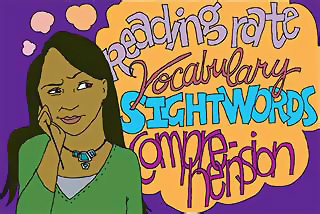How will Ms. Begay know if her lesson plans are effective and her students are learning?
Page 9: Assessing Students Using Performance Measures
 Performance measures (or performance assessments) are an array of testing measures used by educators for the purpose of school accountability. Different types of performance assessments are used to identify multiple components of student learning, achievement, and skills. When different types of assessments are used across the school year, they provide a global evaluation of students’ progress. Assessments usually compare a student’s performance with one of three different types of standards. The assessments are then used to determine whether the information learned by students reflects the adopted curriculum and content standards. The three types of performance measures are discussed below.
Performance measures (or performance assessments) are an array of testing measures used by educators for the purpose of school accountability. Different types of performance assessments are used to identify multiple components of student learning, achievement, and skills. When different types of assessments are used across the school year, they provide a global evaluation of students’ progress. Assessments usually compare a student’s performance with one of three different types of standards. The assessments are then used to determine whether the information learned by students reflects the adopted curriculum and content standards. The three types of performance measures are discussed below.
Individual-referenced assessments compare a student’s performance with his or her performance on a previous test and are used primarily to monitor a student’s progress toward long-term goals. Individual-referenced assessments help teachers to identify areas of strength and weakness, particularly in reading, mathematics, written language, and spelling. Individual-referenced assessments may be used over a period of time in targeted areas to show growth over a certain duration. If growth is not observed, teachers should design a new method of instruction or intervention for the student.
Norm-referenced assessments compare a student’s performance with the performance of a particular group. In addition, norm-referenced tests, or standardized tests, are used to compare school performance outcomes to national norms. In fact, norm-referenced tests may include testing information on subject matter that is not included in the adopted state content standards and consequently may not provide direct information about a student’s performance in the standards-based curriculum.
Criterion-referenced assessments compare a student’s performance with an objective. This type of test assesses whether students have mastered either information or a skill designated by the curriculum. Criterion-referenced assessments consist of traditional tests, or indirect measures (e.g., multiple-choice, true or false) as well alternative tests, or direct measures (e.g., portfolio, book reports).
-
Indirect measures require a teacher to make inferences about a student’s thinking or problem-solving skills. These tests often ask students to reiterate or summarize facts, concepts, or principles.
- Name three factors that create hardships for cattle ranchers.
- Explain how “Rapid Assessment Monitoring” is implemented on cattle ranches.
- What is a conservation easement?
- Direct measures allow observation of a student’s thinking or problem-solving. These tests, which include essay questions, allow teachers to assess students’ understanding of principles. They may require students to solve problems by evaluating, predicting, or applying principles or concepts. Teachers may use an alternative assessment to measure a student’s cognitive processes by developing a special project or portfolio in creative ways.
Imagine that it is spring 2005, and you are spending an afternoon with your grandfather, a cattle rancher in northern New Mexico. Your grandfather explains to you that he has 500 head of cattle on his farm today, but he hopes that in 2050, when you’re managing the farm, you will have over 1000 cattle with plenty of healthy land to sustain such a herd. You know that problems such as (a) drought and noxious weeds, (b) government regulations, (c) development, and (d) conservation easements threaten the welfare of cattle ranching in your area. What would need to happen regarding these factors for your grandfather’s dream to come true? Write a brief essay to address each of these four areas.
For Your Information
In evaluating English Language Learners (ELL), traditional assessments (e.g., multiple choice, true or false tests) are increasingly being replaced by performance assessments that measure a student’s ability to develop a product (e.g., portfolio, book report, model) that requires multiple skills. It is important to assess ELLs using an array of assessments that not only might reflect a more accurate measure of ability but will also create opportunities for students to demonstrate their proficiencies in unlimited ways.